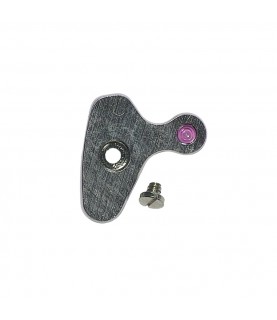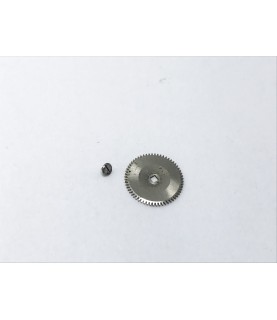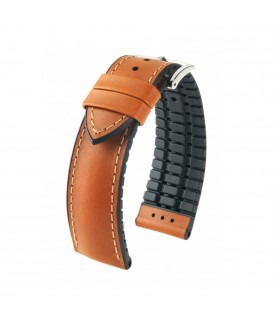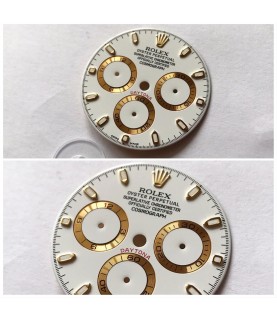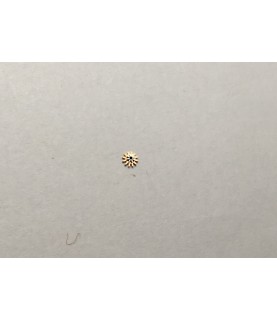The Spirit of Mountaineering
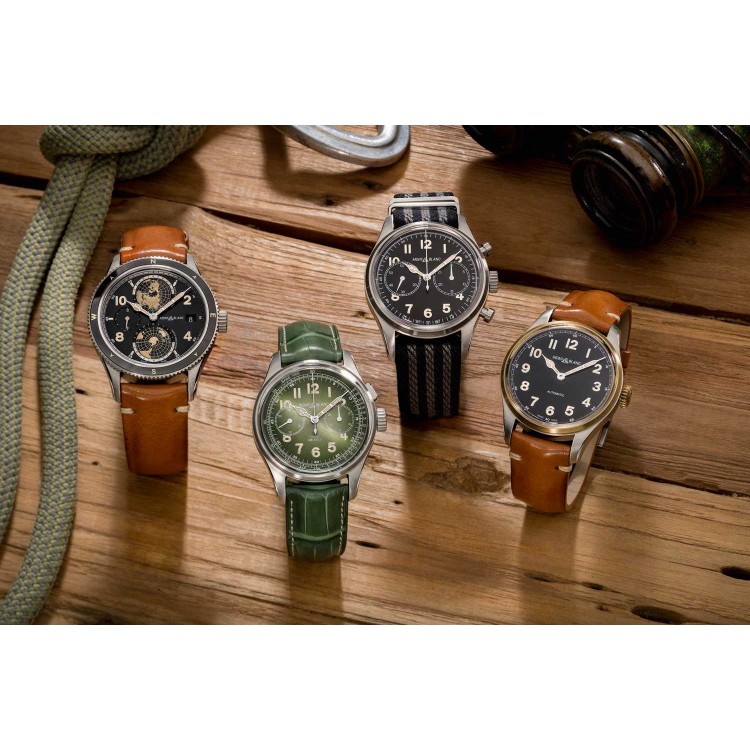

Montblanc CEO Nicolas Baretzki WT: Why is mountaineering such a strong topic for Montblanc this year? NB:First of all, it’s the question of how we build all the collections today at Montblanc. It’s an evolution of how we do things, and we do it with a very systematic approach, be it on TimeWalker, on 1858, on Star Legacy. We start from the roots of Minerva, and with what can inspire us for the creation of a new line. Last year, we had the spirit of racing, and we have such a rich history when it comes to all those chronographs, wristwatches and timers. With Minerva we said, “OK, we have a very rich history in the 1920s and 1930s of military watches, watches for exploration,” these were all watches that had to be used outside, sometimes in extreme conditions, watches that had to be very readable, very robust, and so on. So that was the inspiration for the design code and the concept and the context. Then we said, “OK, exploration, outdoors – what can it be?” Mountaineering, when you are Montblanc, we thought, was not so awkward, and we did not want to just bring another pilot watch or diving watch. I think it’s much more who we are, and maybe it’s something different. We like to do things differently. WT: Looking at what the Montblanc logo stands for, and what the Montblanc Mountain represents, this collection is basically the most essential collection you could have come up with. NB: Exactly. Once we had defined the storyline of that new collection, we had to come up with ideas that made it a reality, and not just a marketing concept. That’s where I think the fun starts. All these collections, we’re building them in the same way. You have the high end, which is the Minerva expertise. It’s such an amazing opportunity to have a 160-year-old manufacturer, but we don’t want to do just the high-end pieces, we wanted to do something linked to the theme, something that is consistent. So we have two executions, the vintage pieces and the collectors’ piece with the 13.21 monopusher chronograph. I think our collectors were requesting it after the one that we’ve done in the last year. It’s a very strong execution: I see a lot of blue at the SIHH and I’m happy that we brought something with a green dial.

Then came the pocketwatch. The pocketwatch was really ‘the piece.’ If we do something with Minerva, we also want to bring innovation. So even though it’s a small adaptation, just a change of the movement from the 16.29 to the 16.24, the 16.24 with an indication with one hand, it’s still a real evolution of that movement. When you build such a pocketwatch, that’s when the functionality with the compass came, and then the whole construction with the Faraday cage to protect it against magnetism. Then came, “OK, it’s about outdoors, so what do we do about it?” And then came the story of the big leather strap – I think it was not just one creation, it was really a process to make it a reality, the spirit of mountain exploration. We are not building watches to go to the top of Everest; it’s more about something that is a recognition of that effort, of that challenge, and of the pleasure of being outdoors. WT: Looking back at the history of how Montblanc has been approaching the watchmaking segment with all those incredible complications, it feels like this collection is more down to earth, despite the mountaineering topic. NB: You are right. I think it’s about bringing Montblanc to where we belong – with watches that offer an amazing value for the money. Not with watches that just have crazy prices, but with real content, and the real content was within the Montblanc positioning. What Jérôme [Lambert] introduced four years ago was that with Montblanc, we want to be positioned, we want to conquer the segment from 2,000 to 4,000, from 2,000 to 5,000 euros.

We want to bring fine watchmaking with content, with a lot of character, but also at a price point, which is more of an entry price point, to the fine watchmaking world. We continue that part. So you have all the [complications] – be it automatic or automatic date or moon-phase or full calendar, etc., depending on the collection. But what we’ve changed this year is that we added one small layer. We said, “For every collection we need one piece, one piece which is the Montblanc differentiating point, the Montblanc manufacturer approach, with always that story of value for money.” The piece where we can say, “If I’m a customer, I want to buy a watch at Montblanc, I want to buy the best valuefor-money watch with the best content, with the best design, the best expression all together,” which one should it be? In the 1858 [collection], definitely it’s the Geosphere. No doubt, with this Minerva development for the Geosphere. On Monday, when I presented it to all the journalists, they didn’t know the price yet. So I asked them, “What do you think is the price of that watch?” I got, “Oh, at least 10,000 euros, no, it’s Montblanc, so maybe 8,000 or 9,000 euros.” I said, “Almost; it’s 5,200.” That’s really the concept of the maison; one piece. If you go to Star Legacy, we did the same thing: high end, and then you have the Suspended ExoTourbillon, a classic but very, very beautiful and modern-designed collection, a rounded case like a galet and then, one piece, which is the value-for-money piece, and on top of it an emblematic Montblanc movement, which is the [Chronograph] Rieussec.

WT: Does that mean that you want to make every collection accessible? NB: Exactly, accessible. Real
manufacturemovement, accessible, and an extraordinary Minerva movement, remaining accessible with a high value, but again, offering value for money. But you see, if you take this example, and if I look at this [Chronograph Rieussec], that’s why, from a strategic point of view, what we have done with Davide [Cerrato, Managing Director of Montblanc Watches], is really working on simplifying the collections. Also for our customers – there is such a large offering on the market we cannot remember everything. Now we have only six collections, two in sports and four classic, including one ladies’ line. We are using the best movement to really represent those collections. And for the Star Legacy, that’s what we are doing with the Chronograph Rieussec. That Nicolas Rieussec is a reinterpretation from a design point of view. Very modern, amazing movement, and what we did, same as with the Geosphere, we said that’s the value we want to give to our customer. We brought back the price when it was launched in 2008, almost. We are going to be in the U.S., I guess around $8,000 for chronograph manufacture. That's Montblanc, you know. Always with a small detail, which is not a detail for me, because, again, we want to offer the full Montblanc experience. All the straps are coming from our Pelletteria in Florence. They all have the Pelletteria logo to confirm that this is Montblanc. It’s not just about the movement; it’s about a full Montblanc watch.

WT:Montblanc has an incredible potential to create synergies within the different segments. Will we be seeing bronze pens and more rugged leather goods, now that you have introduced the mountaineering concept? NB: I would answer in two ways. Number one, what is very important at Montblanc is the fact that every category one way or the other is verticalized. Which means that we bring all the expertise per category. When you have watches, Davide is only taking care of watches; he is the specialist of watches. The development team, from an engineering point of view, is only taking care of watches, not writing instruments. The design team is only working for watches, and for no other product [line]. We’re fully integrated, so that you can genuinely say, “I’m a real watchmaker. I’m a real leather goods player, and I’m really the writing instruments [category] owner.” Because when I do something, it’s not just that I’m trying to be a little bit, I am fully integrated from the manufacturer, from design, from development, and from the expertise of the team. Then, of course, we have a Creative Director, Zaim [Kamal], who is making sure that all together it makes sense. But sometimes making sense does not mean that you are reusing codes in every element. Making sense can be just purely to say, “OK, if I want to go more for vintage, what does it mean, ‘vintage?’” Then you’re going to have the 1858, which is one expression. You’re going to have what we did with the 1926 heritage leather goods that Hugh Jackman will be using in the campaign that we’ve shot in the U.S. at 4,000 meters. We will be using it also in writing instruments and you'll see it soon re-launching a very emblematic heritage piece. We will have a common theme on heritage, but not just playing the very direct, “I have bronze here and I should do it here and there.” It’s a little more subtle. It’s more a question of consistency, but every category has to have its own identity. That, I think, is very important because that’s the guarantee for the customer, that whatever they buy, they buy the real stuff. The point is some codes of some elements will benefit definitely to one collection or one category and will not be an asset but more of a constraint for another category. Luckily, we have a Design Creative Director who has a more global understanding of what it means to bring real innovation, and that he’s using common themes, but with a specific approach.

